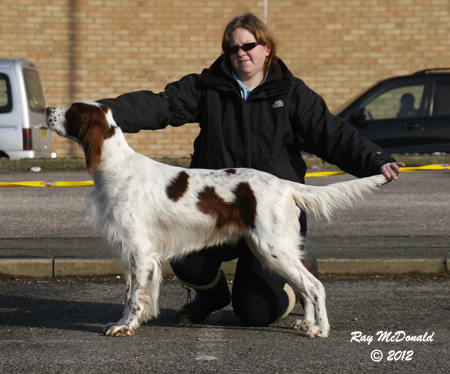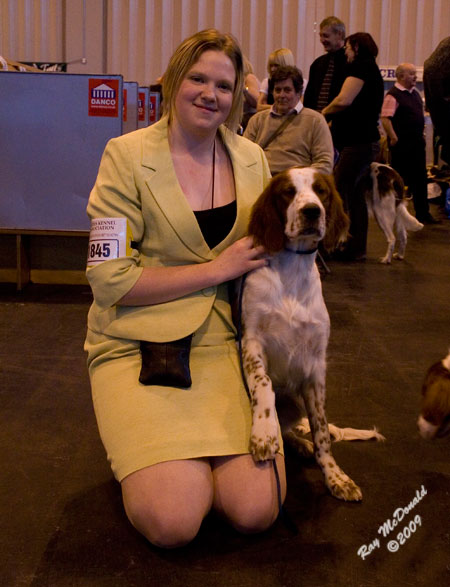Top Tip #37
Learn what motivates your dog(s). Each dog is different and will have different motivation such as food, toys or praise. Ensure you know what your dog likes to optimise training.
Tag: bait
Product recommendations: Daisy Ann Dog Designs – Bait Bags
Over the years I have tried many products for different things with my show dogs. Some have been a huge waste of money, others have just been fantastic which I use time and time again and I want to shout about! I have spent far too much time trying to find online recommendations and so I have decided to put my personal recommendations on the Winning Paws blog for all things show dogs, dog training and keeping my dogs.
This time it’s a bait bag which is designed and made by Daisy Ann Dog Designs
What is it: A bait bag (pretty one!)
Price: £10.99
Where can it be purchased: Direct from Daisy Ann Dog Designs Website or Facebook
Where did I purchase it from: I won it in a competition from The Daisy Ann Dog Designs Facebook page! 
Star rating out of 5: ★★★★
Winning Paws information: The Daisy Ann bait bag is the prettiest bait bag I own by far. They are custom made and therefore you get a choice of colour and pattern used for the inside and the flower detail (optional). This is a great touch and makes then all more personal.
The bag comes with a belt (optional) or you could use your own belt.
The bag itself has a zip, on mine I think I would prefer it slightly smaller and would personally prefer more compartments/pockets as I like to keep the treats, comb, toys and poo bags separate! If/when I order another; I will be asking if this is all possible!
I love the material that’s used on the outside, waterproof and is the material you can scratch to get your dog’s attention! Fantastic when I’m asking the dog for a free-stand and something I do miss with the leather pouches.
Overall this is a practical yet pretty bait bag that can be designed to go with your favorite outfit or left plain for those that prefer something simplistic.
Thank you to Daisy Ann Dog Designs for my fantastic competition prize.
Food vs Toys in the ring
Food vs Toys in the ring
One of the great things about showing over other dog competition sports, is you can “cheat” and use anything you can (within reason) to get your dogs attention in the ring.
Treats I think are the common choice. Most dogs are food motivated and treats are a quick and calm way of rewarding your dog immediately as well as keeping their attention on you and used as bribery.
Toys are less used in the show ring, but are a keen training tool for non food motivated dogs and a popular training tool for those who have done/do agility/obedience it seems.
Toys can be harder. To show good sportsmanship, you do not want to distract other dogs in the ring. Therefore it is not a good idea to be squeaking squeaky toys, playing a game of tug or playing ‘catch’. However, the use of a toy as a lure is fine. Sometimes, a dog just knowing you have something they want can change the way they work for you, so feel free to take in a small toy that will fit in your pocket and then let your dog have a game after the class, away from the rings.
Remember when in the ring to consider your fellow exhibitors and show good sportsmanship at all times.
What to take to a show?
What to take to a show?
So what do you all pack for a show? Below are the top 10 general things to take and then top 10 things that make up the show bag.
What to put in the car
1) Dog(s)
2) Dog Water
3) Water Bowel
4) Your Water/drinks
5) Your food
6) Spare dog towels
7) Rain coat (you and dogs!) or a cool coat for hot days!
8) Show bag
9) Spare dog lead
10) Dog cage and cage plate for ring number (if used)
What’s in the show bag
1) Show leads
2) Poo bags
3) Slobber towel
4) Arm band/ringclip
5) Brushes/combs
6) Bait/reward (could be a toy)
7) Dry shampoo
8) Towel
9) Small or collapsible water bowel
10) Benching chain
Leave a comment if you can think of anything else that you consider important to take to a show!
Standing you dog – part 2
When standing your dog they can either be stacked or free stood. Most breeds will have a certain way of standing them, although some breeds it is acceptable to either stack and top and tail, or free stand them. Below I will explain about free standing your dog. If you have a stacked dog, please refer to Standing your dog – part 1 blog post.
Free stood dogs
Free stood dogs are those who are stood with little or no touching and the handler normally stands in front of the dog.
It can be said that a free-stood dog is more difficult to show although I find a free stood dog is harder to train. Once trained a free stood dog can be a dream to show.
It does require a certain amount of understanding between dog and handler to get the perfect stance but with training and patience it does happen.
If required then you can position your dog’s feet by hand, then adopt a position in front of them. Some breeds though are traditionally stood with no intervention from the handler.
No matter how you stand your dog though, it is important that you keep their attention on you and on the job in hand.
If your dog is a fidget, move them back then walk him forward into the stand or take you dog round in a circle. Personally I prefer to teach my dogs ‘backwards’ and ‘forwards’.
To keep your dogs attention there are many ways to try and each dog will be different. Winning Paws can help you work out the best way to stand your dog and keep their attention so they stay still.


Standing you dog – part I
You may have heard the terms stacked dogs and free stood dogs. Over the next couple of blogs I will explain each of these terms and how best to go about standing your dogs in either of these ways.
Stacked dogs
When you stack a dog you place the feet into position and then hold the head and the tail (if applicable to your breed). It’s important to consider many things when you stack your dog to make sure you present your dog to its best advantage.
Present your dog with outstretched arms and stand/crouch back from him. Keep your own posture too, in particular keep your back upright.
Do not lean over you dog. This will spoil the overall picture and may also affect the dog.
Always keep the dog straight from nose to tail to avoid ‘the banana dog’.
Many people find it easiest to start at the front and work back.
When stacking your dog, the order to go though could be;
- Position head and check for clean eyes and ear position.
- Now while holding the head in one hand position front legs as needed
- Stroke the dog as you move towards the back legs and place them in the required position for your breed and dog.
- Finally have a last check that nothing has moved and check that the dog is in a straight line, (Not impersonating a Banana), place the lead in the correct position
- If necessary hold the tail out and present with outstretched arms.
With practice a good handler and a trained dog will be able to get the stack and present in under 10 seconds and it can be useful to practise doing this.
If your dog moves a leg, calmly place it back into position giving another ‘stand’ command. If they move completely, move them off the spot and start the sequence again. Getting flustered will ultimately affect the dog further. Likewise, telling the dog off might confuse him. He might think you are telling him off for standing there. A quiet ‘No’, or ‘woops’ followed by a repeat of the sequence should suffice.
Some judges will ask you to freestand your dog on completion of the pattern work. With this in mind you should practice free-standing your traditionally stacked dog too.
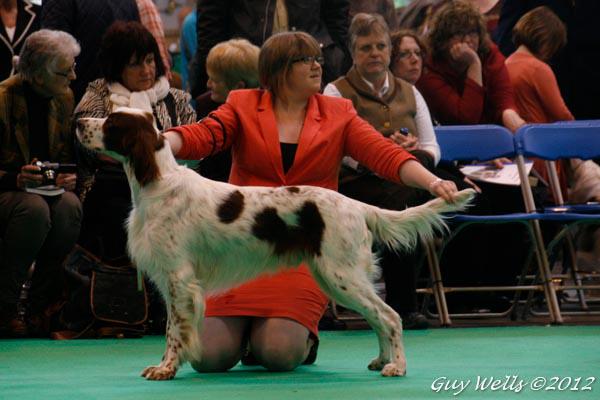


What are your options when you don’t have pockets?
You have found the near perfect outfit, but the one issue is the pockets or there lack of. There are many options that you can go with.

My personal favourite is a small leather pouch that has 1-3 pockets depending on size and comes in black, brown or beige. They are on a piece of string so you can use them as a shoulder bag, or in my preference, round the waist. They are called Nappa bags and can be purchased from most Championship shows.
 Bumbags are common and come in a variety of materials, shapes and sizes. Have a look around websites and shows to find one that suits you.
Bumbags are common and come in a variety of materials, shapes and sizes. Have a look around websites and shows to find one that suits you.
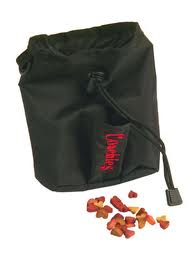
The treat bag can clip onto your belt and can be left open or shut tight by a pull string. Personally I find this more ideal for training than in the ring as they flap around when you run.
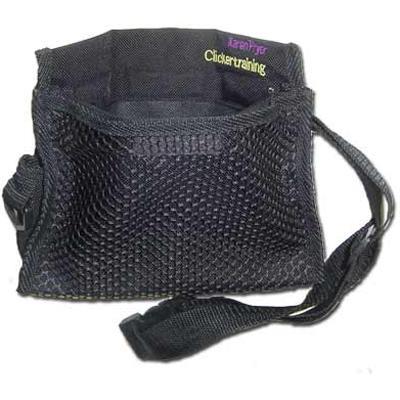 My favourite training treat bag is the Karen Pryor Treat bag, It has a snap shut mechnisem which means you can open or close it with one hand, and it will stay closed or open. Other manufacturers have also now copied this design and all very similar. They have a front pocket, ideal of keeping a small toy, target stick and clicker too!
My favourite training treat bag is the Karen Pryor Treat bag, It has a snap shut mechnisem which means you can open or close it with one hand, and it will stay closed or open. Other manufacturers have also now copied this design and all very similar. They have a front pocket, ideal of keeping a small toy, target stick and clicker too!
There are also other ideal places to keep different items. Below are a few examples.
- Place your dog’s comb in your hair
- Toys in bras (done more often than you might think!)
- Brushes in waist bands
- Treats in armbands
Nothing in life comes for free
Nothing in life comes for free
I saw this picture the other day and just had to share with you all. It is so true on two aspects and worth remembering at all times when training and handling your dog.
Firstly there’s the judge asking for a free stack (or stand as we would say in the UK!) This is becoming more common for judges to ask for a free stand, normally at the end of the movement. This gives the judge a chance to see the dog stand in its own way and doesn’t allow the good handler to hide any faults. Therefore it is important to teach all dogs to free stand and extra work put into those normally stacked.
Secondly there is the dogs thoughts. A dog will rarely do anything for free, they want payment. Remember to reward your dog when they do what you want correctly. This can be with food, toys, fuss or verbal praise. It’s important you let your do know when they do something correct, they will then repeat the behaviour to get the reward again.
What treats or toys do you use to reward your dog?
What to wear to a dog show
What should you wear to a show?
This is something that often comes up in discussions, what should you be wearing in the ring, what colours are best etc.
So, here’s a list of guidelines to think about when choosing your showing outfit;
1) Comfort – You will spend a lot of time standing up so comfortable shoes and clothes that YOU feel comfortable in are a must.
2) Suitability for the weather – Good old British weather will never let us down and will give us a variety of weather, possibly in one day! So make sure you have something suitable for the hot, cold or wet!
3) Colour – you want the colour to compliment your dog. A black dog will get lost in black clothes. So choose something that makes your dog stand out from you.
4) Where to put the bait/toy/bags – Think about does your outfit have pockets or do you need a bait bag?
But what is acceptable and what isn’t?
Today I was at a show in freezing conditions. The show is half inside for small dogs and half outside for the big dogs. Knowing the temperatures and show I opted for many layers including thermal leggings and tops, nice thick 3 in 1 coat and my lovely thermal boots, designed for use in ice and snow! Was a smart today? No! But it followed my guidelines above!
Generally Champ shows are seen as smarter than open shows, and of course Crufts is the occasion many people will buy a new outfit for.
So, for smartness a suit, one that compliments your dog in colour and is comfortable to move your dog in. A smart pair of jeans with a jacket can look just as good and many people will feel more comfortable in this then they might a full suit. Others might prefer a pair of trousers with a smart blouse/shirt. This is where comfort really is important, not just how it feels, but how you feel in your outfit.
Another idea that many people go by when in the ring is wearing something that stands out from the other exhibits. Something the judge may remember to go “I really liked the dog whose handler had a bright pink jacket on.” However, these days you see lots of bright colour jackets/suits around the ring. The fashion is now turning to Swarovski Crystal to help handlers ‘sparkle’ in the ring.
Remember, you spend plenty of time getting your dog ready, spend a bit of time on yourself too!
I will finish this blog with a list of what not to wear;
1) High heels
2) Low cut tops (think about what will happen if you bend over!)
3) Very short skirts (men too!)
4) Dangly jewellery
5) Anything see though
Thank you to Ray McDonald Photography for use of the photo’s


